
|
You entered: gravity
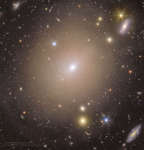 APOD: 2025 February 26 Б Einstein Ring Surrounds Nearby Galaxy Center
APOD: 2025 February 26 Б Einstein Ring Surrounds Nearby Galaxy Center
26.02.2025
Do you see the ring? If you look very closely at the center of the featured galaxy NGC 6505, a ring becomes evident. It is the gravity of NGC 6505, the nearby (z = 0.042)...
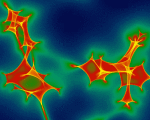 A Network of Microlensing Caustics
A Network of Microlensing Caustics
15.12.2002
A virtual sky map like this would be of interest to astronomers studying gravitational microlensing. In microlensing, the gravity of stars near the line of sight can act to magnify the light of background objects such as distant stars, or quasars. Nowhere is this magnification greater than near a gravitational lensing caustic.
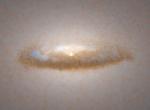 The Doomed Dust Disk of NGC 7052
The Doomed Dust Disk of NGC 7052
22.06.1998
What created the dust disk in the center of NGC 7052, and what keeps it spinning? Although the disk might appear as a relatively tame "hubcap in space", the unusual center of elliptical galaxy NGC 7052 is probably the remnant of a titanic collision between galaxies.
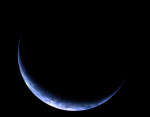 Crescent Earth from the Departing Rosetta Spacecraft
Crescent Earth from the Departing Rosetta Spacecraft
23.11.2009
Goodbye Earth. Earlier this month, ESA's interplanetary Rosetta spacecraft zoomed past the Earth on its way back across the Solar System. Pictured above, Earth showed a bright crescent phase featuring the South Pole to the passing rocket ship.
 Stardust in Perseus
Stardust in Perseus
4.02.2010
This cosmic expanse of dust, gas, and stars covers close to 3 degrees on the sky in the heroic constellation Perseus. Right of center in the gorgeous skyscape is the dusty blue reflection nebula NGC 1333, about 1,000 light-years away. At that estimated distance, the field of view is about 50 light-years across.
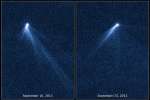 The Unexpected Tails of Asteroid P5
The Unexpected Tails of Asteroid P5
12.11.2013
What is happening to asteroid P/2013 P5? No one is sure. For reasons unknown, the asteroid is now sporting not one but six discernible tails. The above images were taken two months ago by the orbiting Hubble Space Telescope and show the rapidly changing dust streams.
 The Launch of OSIRIS REx
The Launch of OSIRIS REx
10.09.2016
Near sunset on Thursday, clear skies saw the launch of the OSIRIS-REx spacecraft. Sporting a single solid rocket booster, its Atlas V vehicle blasts off from Cape Canaveral's Complex 41 in this low, wide-angle view toward launch pad and setting Sun. OSIRIS-REx is bound for Bennu, scheduled to encounter the mountain-sized asteroid in 2018.
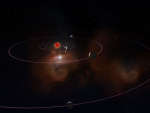 BLG 109: A Distant Version of our own Solar System
BLG 109: A Distant Version of our own Solar System
18.02.2008
How common are planetary systems like our own? Perhaps quite common, as the first system of planets like our own Solar System has been discovered using a newly adapted technique that, so far, has probed only six planetary systems.
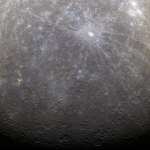 MESSENGER at Mercury
MESSENGER at Mercury
31.03.2011
On March 17, the MESSENGER spacecraft became the first to orbit Mercury, the solar system's innermost planet. This is its first processed color image since entering Mercury orbit. Larger, denser, and with almost twice the surface gravity of Earth's moon, Mercury still looks moon-like at first glance.
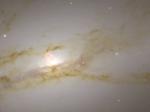 A Bubbling Galaxy Center
A Bubbling Galaxy Center
12.06.2000
What's happening in the center of this galaxy? Close inspection of the center of NGC 4438, as visible in this recently released representative-color image by the Hubble Space Telescope, reveals an unusual bubble of hot gas, colored in red.
|
January February March April May June July |
|||||||||||||||||||||||||||||||||||||||||||||||||